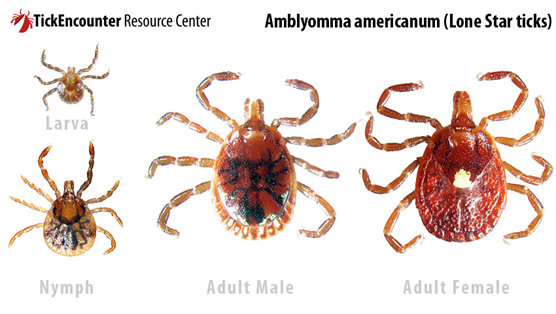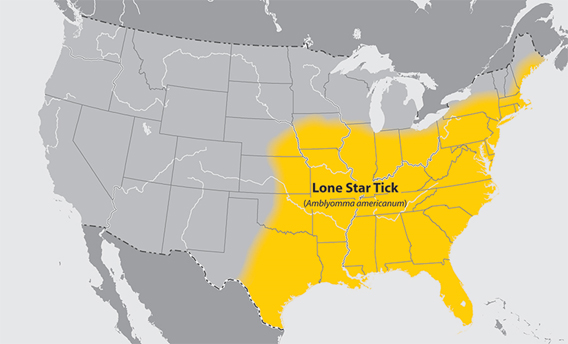Lone Star Tick
Lone star ticks can be found on the East Coast as well. They are about 5mm long and are a reddish-brown color. Female adults have a distinct white spot on the back, whereas males have white markings/streaks around the edge of their bodies. The female ticks are slightly larger than the males, and when engorged, they can be about 10mm long. Lone star ticks tend to target humans as a food source more than any other ticks species. The Lone star tick cannot survive for long in sunny areas, so it is found in shaded areas where it will “quest” on the tips of grass or other vegetation waiting for a host to pass by. It will then climb onto the host’s body and find a spot to feed. The Lone star tick is a “3 host tick,” meaning it will attach to a different host during each one of its life stages: larvae, nymph, and adult. This species is known to cause tick-borne illnesses such as ehrlichiosis and Rocky Mountain spotted fever. It can also cause a red meat allergy known as alpha-gal syndrome.
https://www.cdc.gov/ticks/geographic_distribution.html


